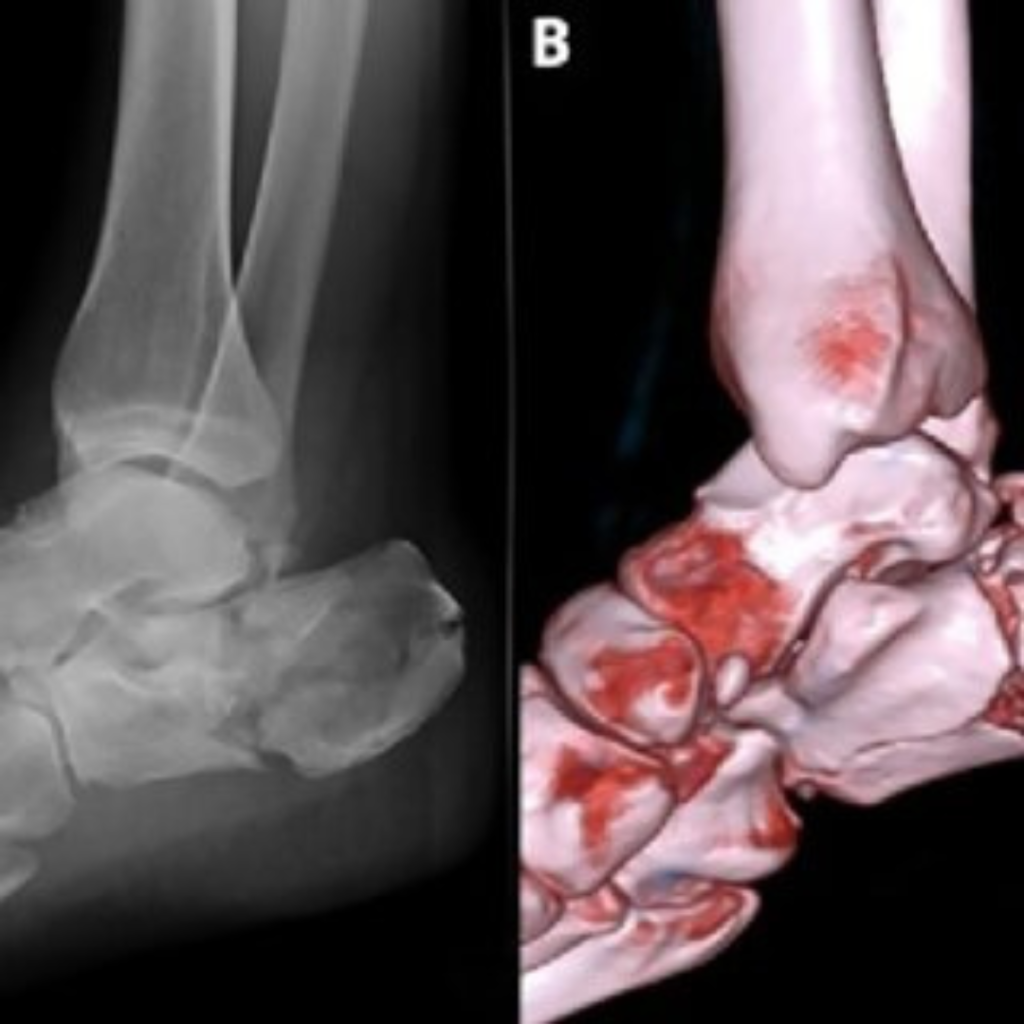A lacerated foot tendon is a serious injury that can cause significant pain and mobility issues. An MRI scan is often used to diagnose and assess the severity of the damage. In this article, we will explore what a lacerated foot tendon looks like on an MRI scan and provide detailed insights into its symptoms, causes, and treatment options.
1. Understanding a Lacerated Foot Tendon on MRI
A lacerated foot tendon occurs when a tendon in the foot is partially or completely severed due to trauma. MRI (Magnetic Resonance Imaging) is one of the most effective imaging techniques used to detect such injuries, as it provides detailed soft tissue visualization. Different types of MRI scans, such as MRI scan ankle ligament damage and MRI ankle anatomy, help in diagnosing various foot and ankle conditions.
2. Symptoms and Diagnosis of a Lacerated Foot Tendon
Before an MRI is conducted, doctors look for symptoms such as:
• Severe pain and swelling
• Difficulty moving the foot or toes
• A visible gap or indentation at the injury site
• Weakness or inability to bear weight on the foot
Physical examination and ultrasound may also be used in conjunction with MRI to confirm the diagnosis. MRI foot anatomy radiology assistant guides radiologists in interpreting the scans effectively. You can book your online appointment for MRI Scan

MRI Scan for Lacerated Foot Tendon, book online appointment
3. How Does a Lacerated Foot Tendon Appear on MRI?
On an MRI scan, a lacerated tendon typically appears as:
• A discontinuity in the normally continuous tendon fibers
• Increased signal intensity on T2-weighted images due to fluid accumulation
• Retraction of tendon ends in the case of complete laceration
• Surrounding soft tissue edema and inflammation
Using Normal ankle MRI vs abnormal comparisons helps in distinguishing injured tendons from healthy structures.
4. MRI Features of a Lacerated Foot Tendon
MRI scans provide detailed information regarding the severity of the injury, including:
• Partial vs. complete tendon tears
• Associated muscle or ligament injuries
• Presence of hematoma or swelling around the tendon
• Changes in tendon thickness and texture
5. Comparing a Healthy vs. Lacerated Foot Tendon on MRI
A healthy foot tendon on MRI appears as a smooth, continuous low-signal structure on T1- and T2-weighted images. In contrast, a lacerated tendon shows irregularity, discontinuity, and fluid signal changes, indicating damage. Normal Achilles tendon MRI scans help radiologists differentiate between a healthy and an injured Achilles tendon.
6. Common Causes of Foot Tendon Lacerations Seen on MRI
Foot tendon lacerations are often caused by:
• Sharp object injuries (e.g., stepping on glass or metal)
• Sports injuries and high-impact trauma
• Accidental deep cuts from machinery or tools
• Severe ankle sprains causing secondary tendon damage
7. Treatment Options After MRI Diagnosis of a Lacerated Foot Tendon
Once an MRI confirms a lacerated foot tendon, treatment options may include:
• Conservative Treatment: Rest, immobilization with a brace or cast, and physical therapy (for partial tears)
• Surgical Repair: Necessary for complete tendon lacerations to reattach the tendon ends
• Rehabilitation: Gradual strengthening exercises post-recovery to restore function and mobility
8. How Radiologists Identify a Lacerated Foot Tendon on MRI
Radiologists assess MRI scans for:
• Loss of tendon continuity
• Presence of high-signal intensity indicating edema or fluid buildup
• Gaps between tendon ends (in complete lacerations)
• Signs of secondary complications such as tendon retraction
With the help of MRI foot anatomy radiology assistant, radiologists can accurately interpret MRI images and identify soft tissue abnormalities.
9. Can an MRI Detect Partial vs. Complete Foot Tendon Lacerations?
Yes, MRI is highly effective in distinguishing between partial and complete lacerations. Partial tears show thinning and irregularity, while complete tears present a total loss of continuity with possible retraction of the tendon ends. Using MRI scan ankle ligament damage, doctors can also assess ligament injuries alongside tendon damage.
10. What to Expect During an MRI for a Suspected Foot Tendon Injury
If you need an MRI for a suspected foot tendon injury, here’s what to expect:
• Preparation: Removing metal objects and wearing comfortable clothing
• Scanning Process: Lying still in the MRI machine while detailed images are taken
• Duration: Typically takes 30–60 minutes
• Results: Radiologists analyze the scans and provide a report to your doctor
Many people wonder, Does your whole body go in for ankle MRI? The answer depends on the type of machine used. In most cases, only the lower leg is placed in the scanner, but some machines may require a full-body position.
Best MRI Scan Center in Seattle
If you are looking for a reliable place for an MRI scan, MRI Seattle is the best MRI scan center in Seattle. They offer high-quality imaging services, including MRI scan ankle ligament damage, MRI foot anatomy radiology assistant, and Normal Achilles tendon MRI scans. You can book an appointment online for all radiology services with experienced professionals ensuring accurate diagnoses.
Conclusion
A
lacerated foot tendon is a serious condition that requires accurate diagnosis
for effective treatment. MRI scans play a crucial role in identifying the
severity and nature of the injury, aiding in better treatment planning. What
type of MRI for Achilles tendon? A standard MRI with T1 and T2-weighted
sequences is commonly used, but in some cases, high-resolution imaging like 3T
MRI may be recommended for better detail. If you suspect a foot tendon
laceration, seeking medical attention promptly can help ensure a faster and
more successful recovery.
